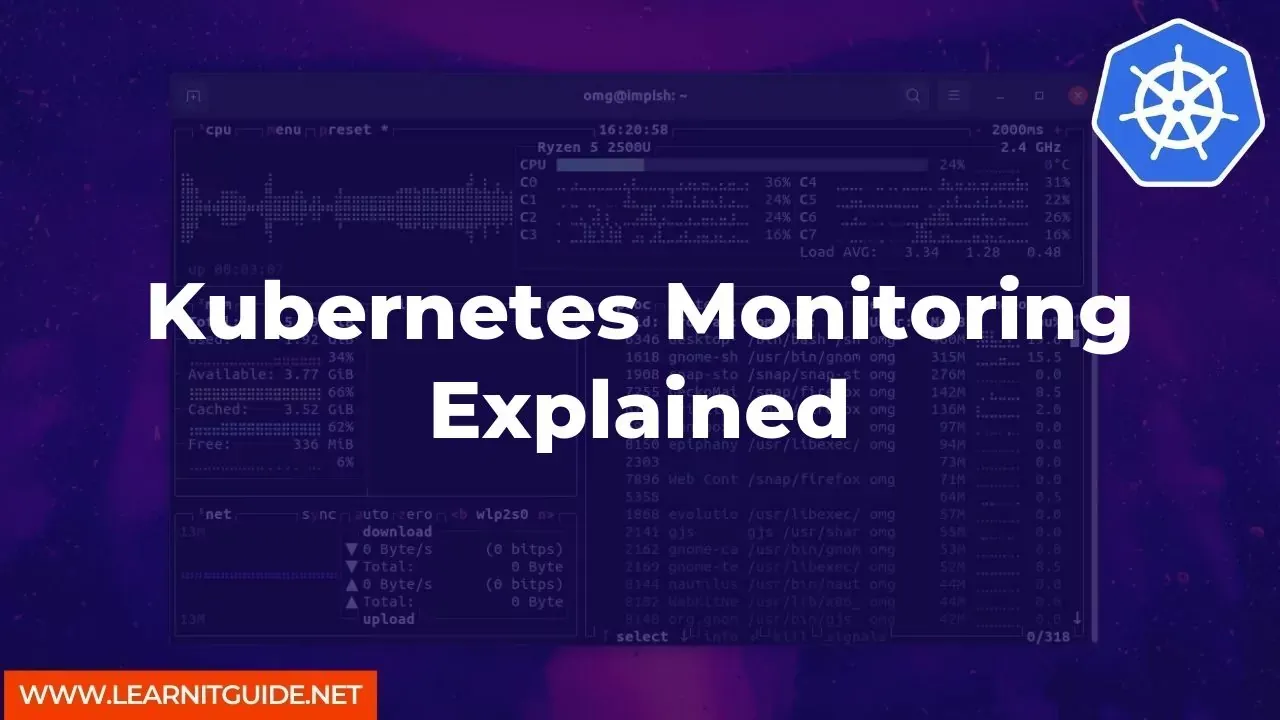Kubernetes has become the go-to platform for deploying and managing containerized applications. However, with its distributed nature and complex architecture, monitoring Kubernetes environments can be challenging.
This article will provide an in-depth explanation of Kubernetes monitoring, why it's essential, and best practices for effectively monitoring your Kubernetes clusters.
Why is Kubernetes Monitoring Important?
Kubernetes monitoring is crucial for ensuring the health, performance, and availability of your applications. With Kubernetes, you can easily scale your applications up or down, deploy them across multiple nodes, and automate many of the maintenance tasks. However, as your Kubernetes environment grows, it can become increasingly difficult to monitor every component and resource.
Kubernetes monitoring allows you to proactively identify issues, troubleshoot performance problems, and optimize resource utilization. With effective monitoring, you can ensure that your applications are running smoothly and meet your service level agreements (SLAs).
Best Practices for Kubernetes Monitoring
- Choose the Right Monitoring Tools
There are many Kubernetes monitoring tools available, both open-source and commercial. When selecting a monitoring tool, consider your specific needs and requirements. Some popular options include Prometheus, Grafana, and Datadog.
- Monitor Key Metrics
To effectively monitor your Kubernetes environment, you need to track key metrics such as CPU usage, memory usage, network traffic, and disk I/O. These metrics can help you identify performance bottlenecks, troubleshoot issues, and optimize resource utilization.
- Monitor Kubernetes Components
Kubernetes consists of many components, including the API server, etcd, kube-scheduler, kube-controller-manager, and kubelet. It's essential to monitor these components to ensure they are functioning correctly and to identify any issues that may arise.
- Monitor Application Performance
In addition to monitoring Kubernetes components and resources, you also need to monitor your application's performance. This includes tracking metrics such as response time, throughput, and error rates.
- Set Up Alerts and Notifications
Setting up alerts and notifications is crucial for identifying and responding to issues promptly. You can configure alerts to trigger when specific metrics exceed a threshold or when certain events occur.
How to Monitor Kubernetes Clusters?
- Use Prometheus for Metrics Collection
Prometheus is a popular open-source monitoring tool that is specifically designed for Kubernetes. It collects and stores metrics from your Kubernetes environment and provides powerful querying and visualization capabilities.
- Use Grafana for Visualization
Grafana is a widely used open-source dashboarding tool that works well with Prometheus. It provides customizable dashboards and visualizations that make it easy to monitor your Kubernetes environment.
- Use Kubernetes API for Monitoring
The Kubernetes API provides a wealth of information about your Kubernetes environment, including information about nodes, pods, services, and more. You can use this information to monitor and troubleshoot your Kubernetes environment.
- Use Commercial Monitoring Tools
If you need more advanced monitoring capabilities, you may want to consider using a commercial monitoring tool such as Datadog, Sysdig, or New Relic. These tools provide more extensive features and integrations with other systems.
Kubernetes monitoring is essential for ensuring the health and performance of your applications. By following best practices and using the right monitoring tools, you can effectively monitor your Kubernetes environment and identify and respond to issues quickly.
Remember to monitor key metrics, Kubernetes components, application performance, and set up alerts and notifications. With these practices in place, you can ensure that your Kubernetes environment is running smoothly and meeting your SLAs.
Related Searches and Questions asked:
That's it for this post. Keep practicing and have fun. Leave your comments if any.








0 Comments